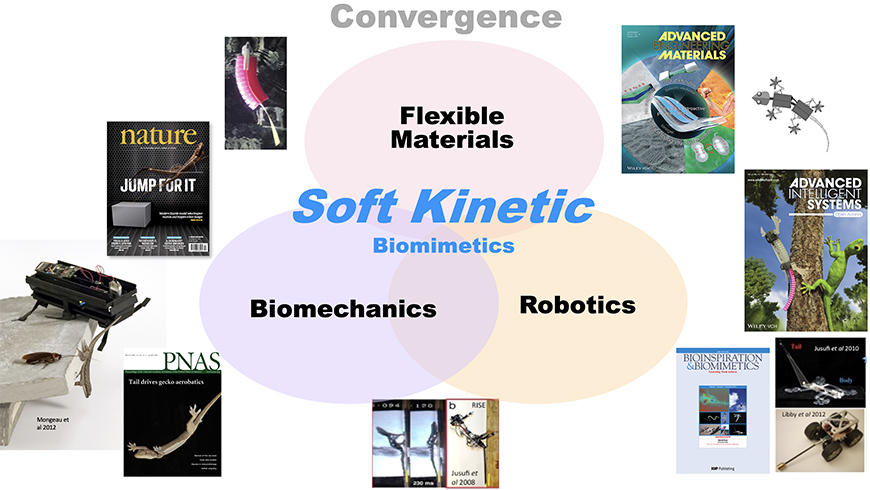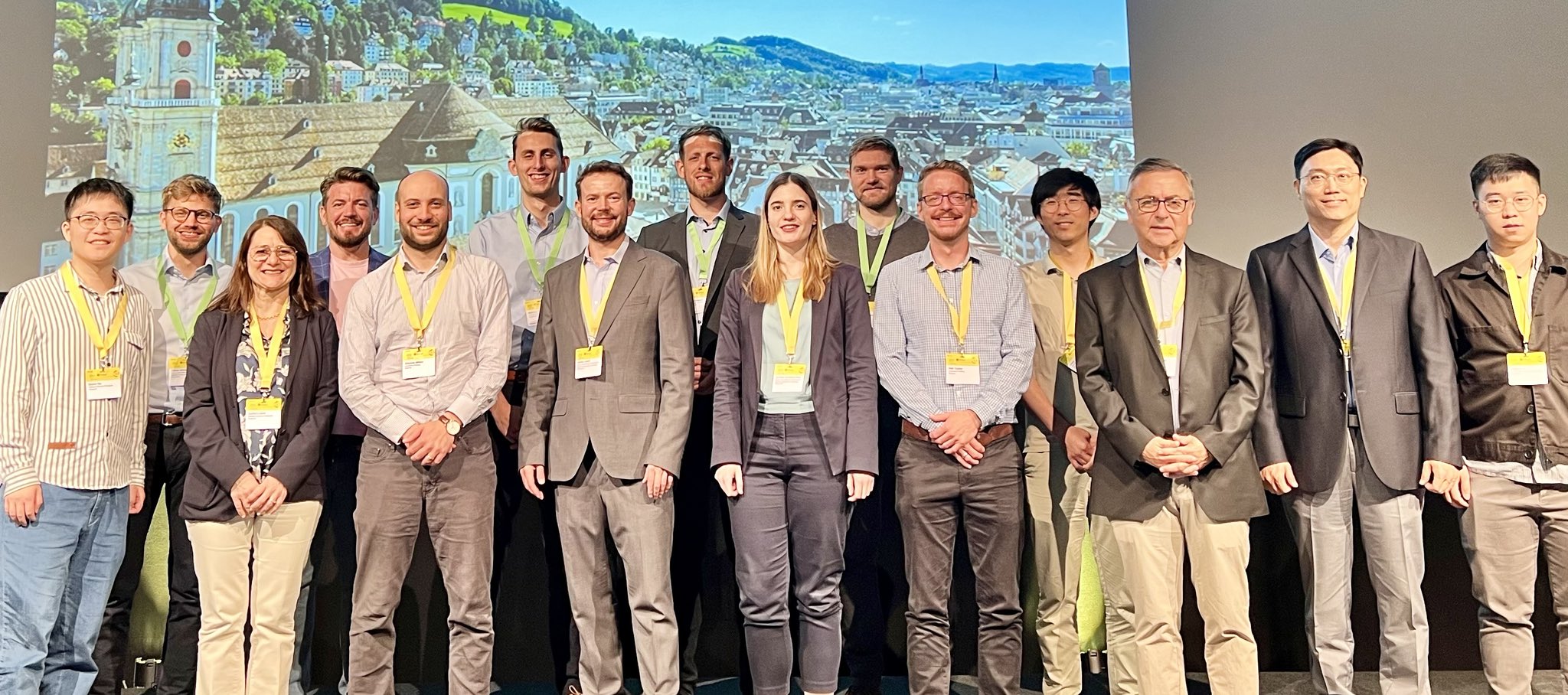Welcome to the website of the Soft Kinetic group!
Soft Kinetic is an inter professional group comprising expertise ranging from biomechanics to robotics and materials science.
To realize robust life-like movement in robots, soft active materials are now required. Robo-physical models allow us to decipher the emergent general principles of natural motion systems by emulating them.

We develop soft robots with biomimetic soft active materials inspired by original biomechanical discovery. Morphing structures such as fins and tails allow for shape changes on the body, thus enabling unparalleled multi-modal locomotion. Read more: /web/juar/
Soft Kinetic group research and innovation
The past decade has presented a dramatic expansion in the development of mobile robots and the application of robotic systems to practical tasks. Despite the proliferation of computation and sensing at the small scale, robots still remain largely unable to access all but the most structured environments, and unable to reach the performances of natural systems. Physical intelligence development has lagged behind advances in AI. As the physicist Richard Feynman famously said: “What I cannot create, I do not understand”. The movement apparatus and Bauplan is therefore subject of fundamental research.
The capability gap between nature and human-made devices is most apparent in locomotion. Animals traverse cluttered terrain (e.g. granular media) effortlessly, whereas even the most advanced robots often get stuck. Biomechanical system robustness emerges from the interplay of materials and mechanics based solutions barely dreamt of by robotics engineers. Although novel computational solutions and biologically inspired mechanisms have advanced robot locomotion, most platforms are made of predominantly rigid parts, offering precision and control. By contrast, biological tissues consist in large part of water, making compliance ubiquitous in nature. Morphing structures such as fins, tails, and wings allow for shape changes on the body, thus enabling unparalleled multi-modal locomotion with multi-functional appendages. Soft active materials are now required to emulate and decipher the general principles of natural motion systems – Experimental robotics can advance motion science by breathing new life into physical models. Embodiment provides physical resilience by exploiting the morphological intelligence of the body to simplify control.
Experimental validation of gliding and climbing is measured in field research. However, the softest model systems are found under water. To this end, Prof. Dr. Jusufi’s research has shown that soft fluidic actuators made of silicone elastomers that enable shape changes on the body, facilitating body stiffness modulation during undulatory swimming in flow tanks. Electroactive polymers are also used in a fluid movement context. Fluidic soft sensors, in turn, provide proprioception for closed loop control.
Robophysical modelling thus unlocks nature’s secrets to maximum mobility and manipulation. Reverse-engineering nature’s patents offers design blueprints for resilient biomimetic devices that expand the reach of human experience with potential for diverse industry applications.
38th International PPS Conference
Prof. Ardian Jusufi hosted leading soft robotics experts from 3 continents at Empa at the 38th International PPS Conference.

Spiny Tail Squirrel inspired Arboreal Locomotion
Cyber Valley Research Fund drives advancements in soft robotics
Dr. Ardian Jusufi expediates the development of stretchable sensor technology
Internships and Research Engineer positions in Experimental Robotics
Student project:
https://biorob2.epfl.ch/pages/projects/?id=729
Robot tails for stability during discontinuous locomotion ANYmal:
Requirements:
- Excellent knowledge of programming and robot simulation
- Independence and creativity
- Preference: coding skills in C++ and familiarity with reinforcement learning
Link here

